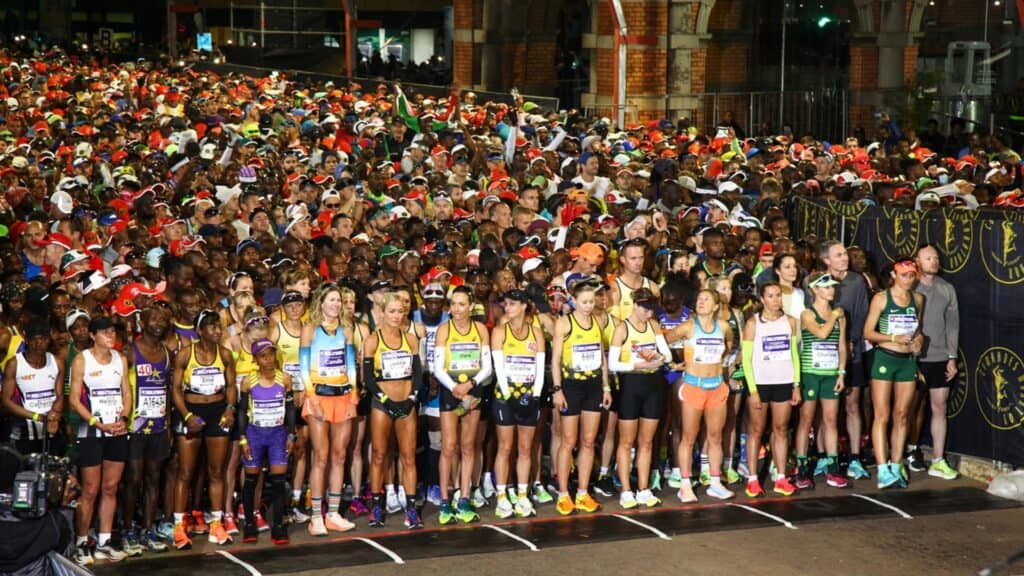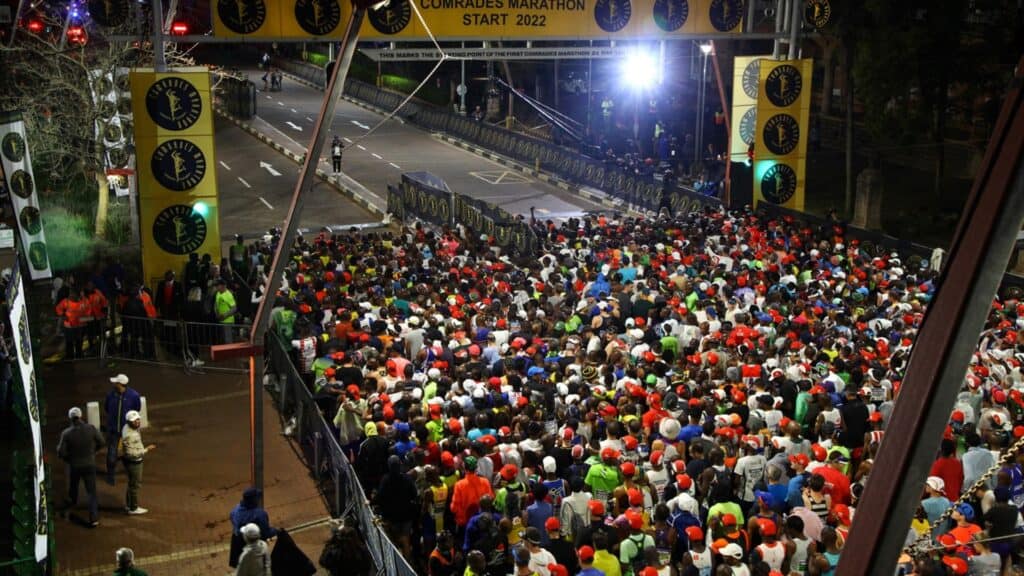With anticipation building around upcoming marathon events, questions often arise about how back-of-the-pack runners can handle the crowds during the initial kilometers of the race.
Navigating the crowds at the start of a marathon requires patience, strategic planning, and realistic expectations. Instead of panicking and trying to sprint through congestion to make up lost time, it’s crucial to stick to your race plan and pace yourself steadily. By accepting potential delays and staying disciplined, back-of-the-pack runners can optimize their performance and enjoy a successful race experience.

Understanding the Challenge
Runners starting in slower seeding groups often face challenges with congestion and overtaking during the early stages of the race. It’s not uncommon for runners in slower groups to be passed by those in faster groups within the first few kilometers, leading to feelings of pressure and the temptation to deviate from their race plan.
The Importance of Patience
A key takeaway from the discussion was the importance of patience when tackling the start of a marathon. Rather than succumbing to panic and attempting to sprint through the congested field to make up lost time, runners are advised to stick to their plan and exercise patience. Rushing to catch up too quickly can negatively impact overall performance.
Managing Expectations
It’s crucial for runners, especially those in slower seeding groups, to adjust their expectations regarding time lost at the start line. By accepting the reality of potential delays due to congestion, runners can avoid unnecessary stress and focus on executing their race strategy effectively.
Is It Possible To Finish The Comrades Marathon By Walking It?
Sticking to Your Plan
Consistency and discipline are key to a successful race, particularly for back-of-the-pack runners. Rather than chasing time early on, runners should focus on pacing themselves steadily and gradually working towards their goals. Sticking to a well-thought-out race plan throughout the duration of the marathon is essential for optimal performance.
Seeking Solutions
While congestion at the start of marathons remains a challenge, ongoing discussions are being held about potential solutions to alleviate the issue. While a definitive solution may not yet be in place, it’s essential for runners to remain informed and adaptable to any changes implemented by race organizers.
Navigating the crowds at the start of a marathon requires a combination of patience, strategic planning, and realistic expectations. By understanding the challenges involved and staying true to their race plan, back-of-the-pack runners can maximize their performance and enjoy a fulfilling race experience.

Maximizing Race Performance
In a recent coaching session, an athlete sought personalized guidance to optimize their performance in an upcoming major race.
The session provided valuable insights into crafting effective training plans and addressing logistical considerations to ensure peak performance on race day.
Setting Performance Goals
The coaching session began with the athlete articulating ambitious performance goals, aiming to excel in a challenging race and achieve personal best in the marathon distance. Despite facing setbacks in the past, the athlete demonstrated a strong commitment to their goals and a desire to excel.
Evaluating Performance Metrics
As the coach, I conducted a comprehensive assessment of the athlete’s performance metrics and progress, identifying areas for improvement and forecasting potential race outcomes. Leveraging data-driven insights, I provided tailored recommendations to set realistic goals and optimize training strategies for enhanced performance.
Customizing Training Strategies
Tailored training strategies were developed to align with the athlete’s unique needs and aspirations. Emphasis was placed on consistency, quality workouts, and strategic recovery practices to maximize training effectiveness. The athlete received personalized guidance on structuring training cycles, integrating complementary training modalities, and selecting race events strategically.
Streamlining Race Preparation
Logistical considerations, such as travel arrangements and race-day logistics, were carefully addressed to ensure a smooth and stress-free experience on race day. Practical advice was provided to streamline race preparation, minimize distractions, and optimize performance conditions for the athlete’s success.
Celebrating Progress and Commitment
As the coaching session concluded, the athlete expressed gratitude for the personalized support and guidance received throughout their journey. Their dedication and commitment serve as a testament to the transformative power of structured training, perseverance, and unwavering determination to achieve excellence.
Navigating Setbacks: Insights from Athlete’s Training Journey
In a recent conversation, one athlete’s training journey shed light on the intricacies of adapting goals in the face of setbacks.
Despite encountering a two-week interruption, the athlete remained committed to their goals, seeking guidance on recalibrating their objectives while staying true to their aspirations. Through the gradual reintroduction of training routines and leveraging community support, the athlete crafted a path forward with renewed focus and determination.
This athlete, preparing for a significant race, found themselves at a crossroads after encountering a two-week interruption in their training regimen. With aspirations for a 3:30 marathon time and eyeing a coveted Bill Rowan medal at Comrades, the athlete grappled with the decision to recalibrate their goals amidst challenges.
Evaluating Progress Amidst Challenges
The discussion delved into the athlete’s journey, highlighting the importance of resilience and adaptability in the pursuit of long-term objectives. Despite facing setbacks, the athlete remained committed to their training journey, seeking guidance on navigating obstacles while staying true to their aspirations.
Crafting a Path Forward
Guided by a determination to persevere, the athlete explored tailored strategies to mitigate the impact of the hiatus and realign their training priorities. Emphasis was placed on gradual reintroduction of training routines, prioritizing recovery, and leveraging past race experiences to inform future decisions.
Leveraging Community Support
The athlete’s engagement with the training club provided a supportive ecosystem where experiences were shared, advice sought, and successes celebrated. Harnessing the collective wisdom of the community, the athlete found solace and inspiration in the journey shared with fellow athletes.

Looking Ahead with Resilience
As the conversation concluded, the athlete embarked on their journey with renewed focus and determination. Armed with insights gleaned from setbacks and fortified by the support of the community, the athlete set their sights on achieving their performance goals, confident in their ability to overcome obstacles along the way.
In the realm of endurance sports, setbacks serve as catalysts for growth and adaptation. By embracing challenges with resilience and drawing upon the support of a dedicated community, athletes navigate obstacles, recalibrate goals, and emerge stronger on their journey towards excellence.



Comments are closed.